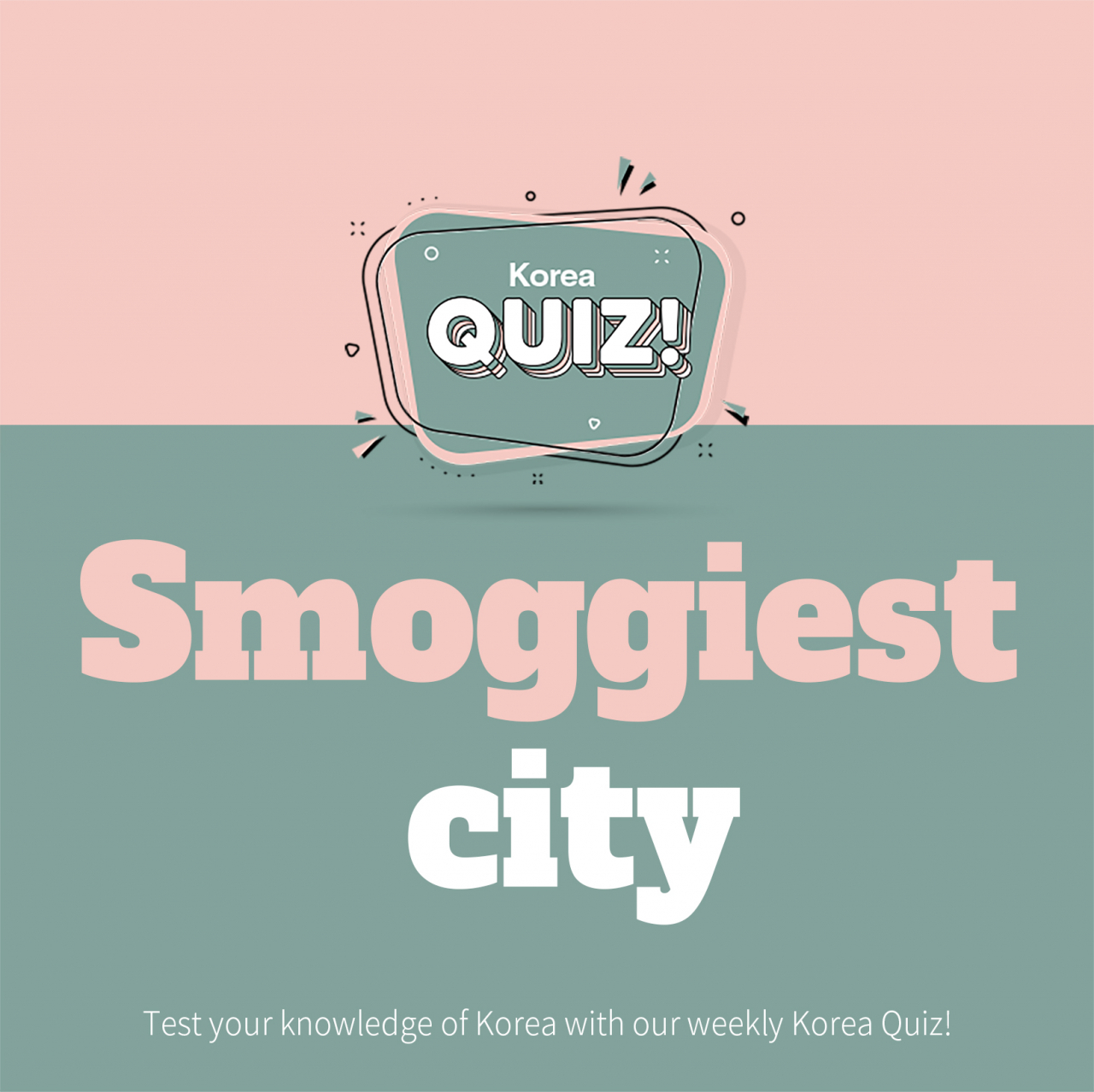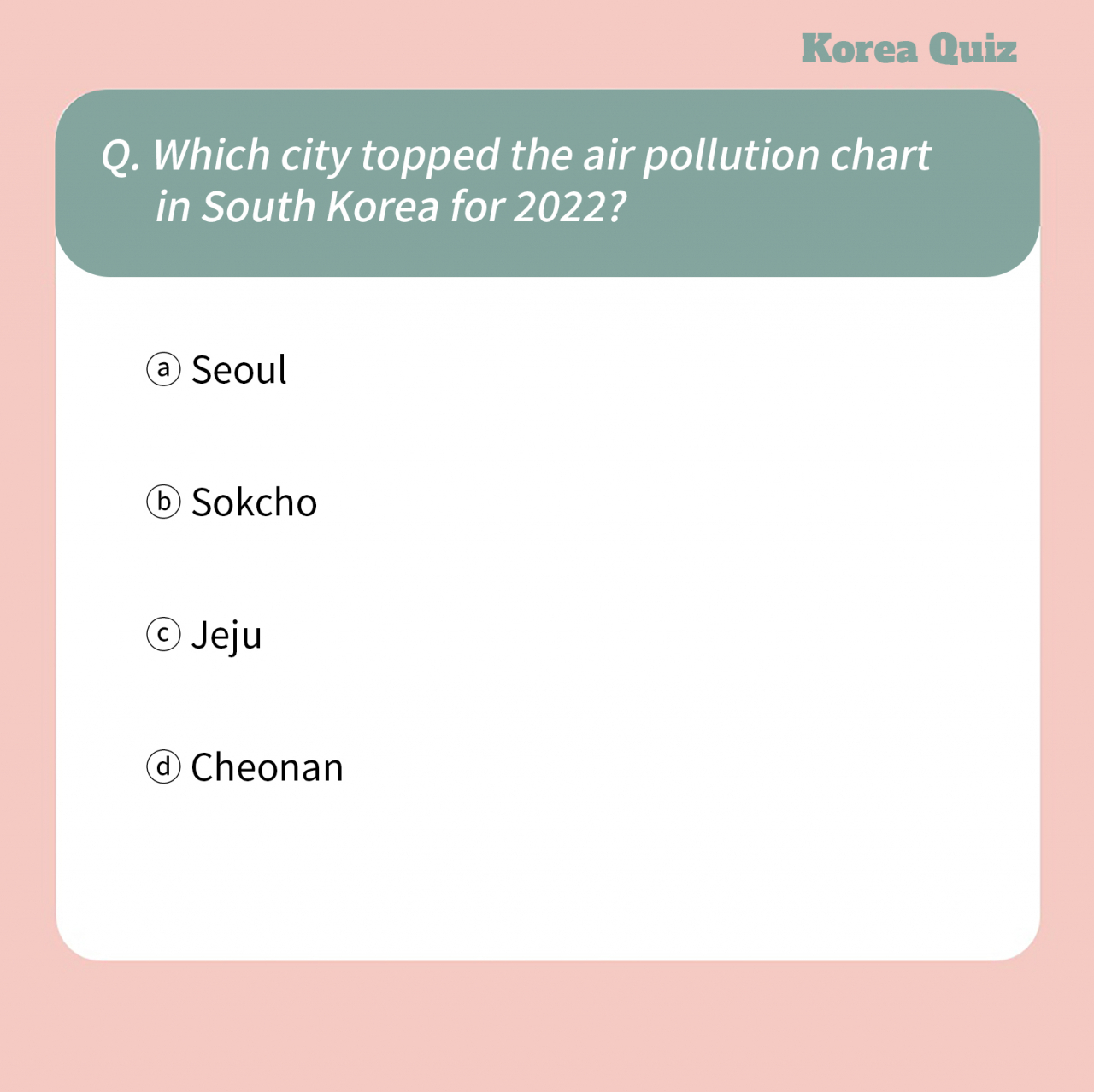

Find the answer at the bottom of the page.
For clean air in South Korea, head east or south, rather than west.
According to data from IQAir, a global air quality company, cities in the country’s central western South Chungcheong Province near the Yellow Sea recorded the highest levels of PM2.5 fine dust particles last year.
The city of Cheonan topped the 98-city ranking as the smoggiest city, with an average PM2.5 concentration of 30.3 micrograms per cubic meter, followed by Asan at 28.3 micrograms.
Eastern coastal cities in Gangwon Province were at the other end of the spectrum. In particular, Sokcho maintained the cleanest air levels for the second year running, registering just 10.6 micrograms per cubic meter in 2022.
Moving south, the city of Jeju on the eponymous island popular among vacationers ranked relatively low at 78th with 15.2 micrograms per cubic meter, despite a slight increase of 1.6 micrograms from a year earlier.
Seoul’s reading of 18.3 micrograms in 2022, slightly improved from the previous year, placed it 42nd in the ranking of Korean cities.
In a global population-weighted ranking of capital cities, however, the South Korean capital was 51st out of 116 cities. N'Djamena in the African country of Chad topped the list with a measurement of 89.7 micrograms per cubic meter, while Washington recorded 9.8 micrograms per cubic meter.
The World Health Organization's annual PM2.5 guideline is 5 micrograms per cubic meter.
Only 13 of 131 countries in the report managed to meet the WHO standard, according to IQAir.
Answer: d







![[Today’s K-pop] Blackpink’s Jennie, Lisa invited to Coachella as solo acts](http://res.heraldm.com/phpwas/restmb_idxmake.php?idx=644&simg=/content/image/2024/11/21/20241121050099_0.jpg)